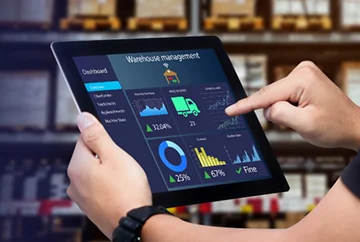In an industry that is facing pressure from demand spikes globally, end-to-end digitization is not only the answer but also the way forward because future-proofing the life sciences supply chain is crucial to successfully managing global pandemics as this one.
Sep 14, 2020
Life Sciences
| 4 min read
The COVID pandemic continues to affect global supply chains, over two quarters after governments and businesses grapple with the various ways in which it has affected activities and processes globally. The fact that the life sciences supply chain has faced significant pressure as a result is of no surprise, but it has demonstrated a clear need for building resilience in this area. Investing in end-to-end digitalization seems like an obvious necessity, and c-level executives in this industry are unanimously acknowledging this fact. However, tackling constantly evolving complexities on the demand and supply front and on the regulations front, and orchestrating integrated effort at the top management level remains the key to building resilient supply chains that can withstand global crises such as this one.
The life sciences supply chain is subject to a number of pressures and challenges - from fulfilling variable demand of therapeutic products to providing pandemic-related healthcare, from shifting regulatory requirements and pricing pressures to concerns about data collection, storage, and ownership, from the lack of demand visibility to fragile supply chains and cost pressures. These challenges only manifest in greater complexity due to the global impact of the pandemic.
However, the massive amount of data that is generated in the life sciences ecosystem can help companies tackle these challenges and chart roadmaps to greater efficiency and growth.
By leveraging technological developments in AI, blockchain, cloud computing, augmented and virtual reality, 3D printing, and integrated digitization efforts at the C-level, the life sciences industry can redefine supply chain resilience.
Integrating data from multiple points of generation with physical objects can not only bring life to digital supply chains but also facilitate smarter decision making. Manufacturers for example, can respond to demand variability through an interconnected supply chain with complete visibility of real-time consumption patterns, deploying 3D printing to enable the design and manufacture of therapeutic products personalized to individual patients, and using analytics to optimize R&D efforts by leveraging patient data. Blockchain technology has shown promise on the supply chain digitization front, and global organizations like the World Economic Forum have also issued deployment toolkits, expecting an integrated effort to redefine trust and visibility.
However, supply chain digitization requires companies across the globe to collaborate on two significant fronts:
- While the life sciences ecosystem produces a vast amount of data, concerns over its ownership and consequent regulations on privacy are the gatekeepers to its promises. Blockchain, a distributed and secure database technology can help organizations overcome these challenges, although the question of ownership remains a pertinent concern. However, with a number of global pharmaceutical companies moving their data to the cloud, collaborations are already underway.
- The second challenge is managing risk and meeting regulatory requirements. This translates into regulations on pricing (an example is disallowing value-based pricing in some countries), data security concerns, drug compliance norms and so on. As companies aim for distributed supply chains, the need for comprehensive regulatory and information management systems is also becoming clear. For ensuring data security, companies must collaborate with ecosystem partners closely to develop end-to-end cybersecurity programs that evolve over time.
Strategy roadmaps for supply chain digitization
The benefits of supply chain digitization in the life sciences industry are clear: real-time demand-sensing, asset tracking, quality control, faster delivery cycles, risk sharing and improved performance across all links will take the life sciences supply chain to a new paradigm. However, over 45% of companies fail to define a clear roadmap when beginning a digital pilot.
For end-to-end digitization of the supply chain, companies must focus on finding existing inefficiencies and pain points.
As data becomes increasingly integrated with objects through IoT and cloud infrastructures, blockchain-based supply chains are allowing real-time asset tracking, which can help companies track demand in real-time rather than speculations and historical data, which rarely assist decision making in times of crisis.
By deploying global supply chain control towers, companies can leverage smart solutions to not only forecast demand, but also tackle other interdependencies that are unique to life sciences. For example, fueling R&D departments with patient and drug-testing data, linking automated production units with real-time demand of patient-customized drugs, and so on. In the life sciences industry, building transparency across the supply chain not only carries the potential to usher greater trust and interoperability, but also drive higher revenue, improve inventory and customer management, and lower the cost-to-serve.
With digital supply chains, companies can also benefit from leveraging insights from their past partnerships with suppliers and manufacturers to assess supplier performance, develop real-time diagnostic capabilities, and improve internal workflows, thereby allowing continuous operations with zero downtime, despite constraints on workforce size and distancing norms. End-to-end digitization is, therefore, not only the way ahead for the life sciences industry, but also the world’s hot ticket to reconcile with the current pandemic.
Recommended
Data & Analytics | 4 min Read
Life Sciences | 4 min Read




